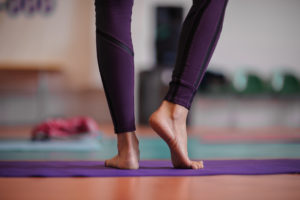By Monique Lonner, Director of Soul Yoga Therapy
Do you remember your first time?

I remember teaching my first Yoga class. Over 15 years ago, I stepped out onto the teacher’s mat with my hands and voice shaking. My sequence was standard, I cued the left side of a pose twice, I got to Savasana 5 minutes early, but I got through it. I kept teaching. I got better. I had more fun.
Every journey begins with the first step. It’s the most important part of a Yoga professional’s journey – to teach that first awkward, scary class! What I learned soon afterwards was that getting better is a combination of continuing to teach, but also continuing to learn.
The first time a pregnant woman came into my class I nearly fainted! Having never been pregnant I was at a complete loss for understanding what that woman might have been feeling in her body. My 200 hour training featured only 2 hours on prenatal yoga! I was afraid of hurting her and was painfully nervous during the entire 75 minutes of class.
The fact is that anyone can walk into your class at any time. Yoga statistics indicate that close to 30 million people are going to Yoga these days. Adults 25 and older make up the bulk of those practicing, and those that are older than 50 are the fastest growing segment. That means more people will show up in your class with injuries and conditions. More and more medical professionals, from back pain specialists to Obstetricians, are sending patients to the mat for healing and support.
It can be nerve wracking to have a pregnant student next to someone with knee replacement practicing with you – especially if you’re not confident in knowing the modifications. We believe in YOU and we believe in the power of Yoga practice. So as support for your journey we happily present this free 4 minute video of Flossie Park providing some tips on how to modify asana for pregnant women. I wish I had this way back then!
Simple modification for a knee replacement:
It’s a conundrum! People with a knee injury or a knee replacement often can’t bend their knee enough to get into a standard hip opener, but they have tight, painful hips due to their injury! Plus, knee issues can often be related to misalignments and restrictions in the ankle or hip joints.
 For someone who can’t bend their knee enough to get into a standard hip opener, have them lie down on their back, lift their leg straight up, place a strap around the sole of the foot and bring the leg across their body to the opposite side just until they feel the stretch on that hip. This “leg over” helps relieve tightness in the hip without having to bend the knee!
For someone who can’t bend their knee enough to get into a standard hip opener, have them lie down on their back, lift their leg straight up, place a strap around the sole of the foot and bring the leg across their body to the opposite side just until they feel the stretch on that hip. This “leg over” helps relieve tightness in the hip without having to bend the knee!
